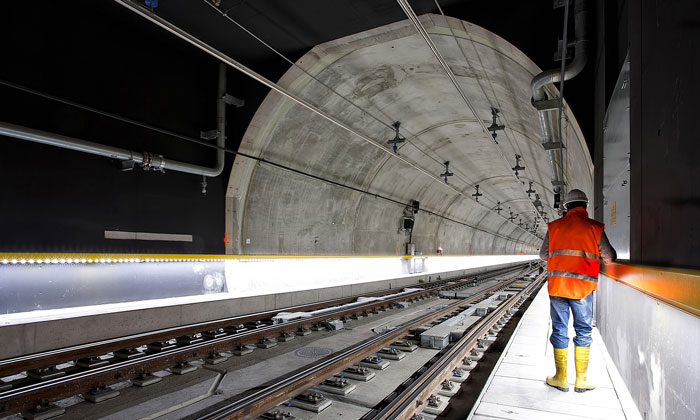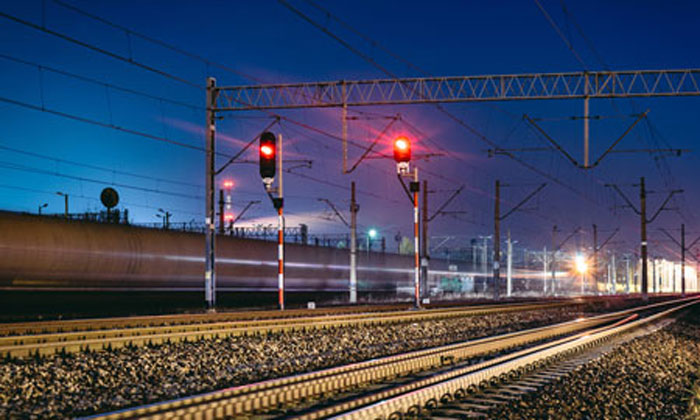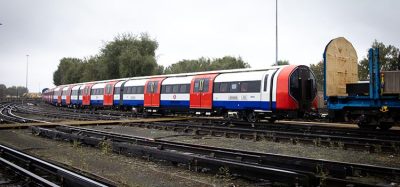Cutting the risks of copper cable theft through the IoT
Posted: 22 November 2017 | Avinash Chaudhari, Narendra Sivalenka - Cyient | 4 comments
With global copper prices remaining high, cable theft within the rail industry is a problem that continues to damage rail operators leaving them and infrastructure owners with huge costs. What options and solutions exist for the railway industry to safeguard vital copper cabling from thieves? Cyient colleagues Avinash Chaudhari (Assistant General Manager – Delivery & Operations, Transportation) and Narendra Sivalenka (Senior Manager – Semiconductor, IoT & Analytics) explore here.


Signalling is the heartland of railway infrastructure, enabling trains to move along networks efficiently and safely. Single to multi-core copper conductors are used extensively in this infrastructure as they are robust enough to withstand extreme physical conditions and are rated fairly to carry the required voltages, current and frequencies.
While copper cabling is vital to the safety and efficiency of the world’s rail networks, it’s also incredibly attractive to thieves. Copper cable theft represents one of the biggest challenges faced by the global railway industry today. Theft tends to increase when worldwide prices for scrap metal rise. According to the London Metal Exchange1, the price of copper has increased by more than 50 per cent in little over a year. In the months between May and August 2017, the value rose by 25 per cent to £5,029/t, raising fears that copper thieves will be incentivised to strike again.
The true cost of copper cable theft
Theft is typically high, with thousands of miles of trackside copper cabling to steal from that is generally far away from densely populated areas and cannot easily be monitored. When a portion of signalling cable is removed, a track circuit failure occurs. This results in train services being disrupted – potentially for hours – causing a huge loss of revenue for operators.


The problem has plagued transport networks for years, affecting some of the world’s strongest economies and emerging markets alike. The U.S. alone reports that the amount of copper successfully stolen and redeemed exceeds $1 billion annually2. Earlier in 2017 in the UK, a man was jailed for cutting the cable from live lines and selling it for a profit of £1,000. The incident cost Network Rail over £164,500 and resulted in more than 3,000 minutes of delays to trains in the East Midlands area alone.
The role of smart technology
Law enforcement agencies across the globe have been working to reduce the occurrence and lessen the impact of copper cable theft for many years. In the UK, the Scrap Metal Dealer’s Act3 introduced in 2013 forced scrap dealers to obtain a full licence, record each sale of metal and refuse cash payments. In 2010 Network Rail signed a multi-million-pound deal with SmartWater Technology to protect the infrastructure of their London to North West (LNW) mainline. The integrated, forensic marking solution sprays offenders with a chemically coded, ineffaceable liquid when triggered by unauthorised activity. It is invisible to the naked eye but fluoresces under UV light.
Another system, known as RABIT (Rapid Assessment BT Incident Tracker) is an Artificial Intelligence-based sensing system used in the telecoms industry that can pinpoint precise locations where cable theft might be taking place. However, this system cannot be applied to the rail sector because the types of signals carried are too different.
These technologies are making strides in reducing theft and catching criminals, but figures show that cable theft remains a challenge for the industry. A recent report from the British Transport Police4 found that cable theft is still occurring five times a week, causing 23,670 minutes of delays across Network Rail.
Leveraging the IoT to reduce theft
The Internet of Things (IoT) is transforming everyday life, business applications and the global economy. It has already been applied to the rail industry for 

IoT also offers huge potential when applied to the challenge of copper cable theft. By placing devices embedded with sensors along the trackside cables, operators would be able to detect the current flowing through the wire. If a cable was hacked, the closest device would detect a loss of power at a specific point and automatically alert the authorities of the location and time of the loss of power. While the possibilities of this technology are exciting, applying this type of solution within the rail sector also presents various challenges that must be overcome before it can be adopted on a mass scale.
Overcoming certification challenges
Signalling cables are safety-critical, as any tampering with the infrastructure could lead to a disastrous accident or even loss of life. This means that any change or modification to this equipment needs to be approved by industry bodies, such as ERADIS5 in Europe, before being implemented. A non-invasive IoT solution, however, would not interfere with any existing railway infrastructure, instead using connectors that could sense if any power was going through the cable without modifying the existing functionality. This could overcome any potential certification issues and result in less downtime when deploying the solution.
Establishing genuine theft alerts
Of course, a loss of power detected by the device may be down to a period of maintenance, during which power is routinely switched off. To ensure an alert would not be triggered in this instance, there needs to be a second layer of monitoring installed within the device that looks for the physical presence of the cable in addition to the presence of an electric current. A link could be attached between the second layer sensing device and cable so that when somebody attempts to dislodge the cable, a second signal would be triggered as the link snaps, alerting the authorities to the theft. A careful balance would also need to be struck in terms of the device’s sensitivity in the presence of high tension catenary power lines.
Securing the future of signalling
The reality is that as global copper prices remain high, so too will the threat of cable theft. This is a recurring problem for global railway systems, but also impacts several other industries such as telecoms and utilities where customers can be left without landline or internet connections.


References:
1. www.lme.com
2. https://brandongaille.com/20-extraordinary-copper-theft-statistics/
3. http://www.legislation.gov.uk/ukpga/2013/10/enacted
4. http://www.btp.police.uk/pdf/Stats%20Bulletin%202016-17%20FINAL%20Aug%2017.pdf
5. https://pdb.era.europa.eu/
6. https://www.ispreview.co.uk/index.php/2015/05/crimestoppers-and-bt-to-continue-fight-against-uk-copper-cable-theft.html
Biographies




Narendra Sivalenka, PMP® is Senior Manager – Semiconductor, IoT & Analytics at Cyient. He is responsible for generating and developing ideas that transform into potential business solutions. He has more than 18 years of cross functional experience in diverse fields such as IoT, fleet management, health monitoring, performance analysis and materials management. He holds a Bachelor’s degree in Mechanical Engineering and Executive MBA in Business Management.
Stay Connected with Global Railway Review — Subscribe for Free!
Get exclusive access to the latest rail industry insights from Global Railway Review — all tailored to your interests.
✅ Expert-Led Webinars – Gain insights from global industry leaders
✅ Weekly News & Reports – Rail project updates, thought leadership, and exclusive interviews
✅ Partner Innovations – Discover cutting-edge rail technologies
✅ Print/Digital Magazine – Enjoy two in-depth issues per year, packed with expert content
Choose the updates that matter most to you. Sign up now to stay informed, inspired, and connected — all for free!
Thank you for being part of our community. Let’s keep shaping the future of rail together!
Related topics
Internet of Things (IoT), Metal & Cable Theft, Security & Crime Management, Technology & Software
Related organisations
British Transport Police (BTP), Cyient, London Metal Exchange, Network Rail








why not use New patent application cable clamp rail with connector
A good idea. To be implemented and seen for the best result.
I’ve been working on Metal theft for 10 years and was pivotal in the development of strategies in the UK to tackle the problem. I was the National project lead for Operation Tornado and was I was involved in the development and delivery of the 2013 Scrap Metal Dealers Act. I predicted that the opportunists would return and theft would rise without a network in place to challenge the problem and enforce the legislation. Unfortunately, this prediction is becoming a reality.
It would be naive to suggest that those who steal metal and, as a result, destroy and disrupt our transport systems, communication and utility networks would not drift back as the risk diminishes of them being caught.
If commodity prices continue to rise or remain at the current level we could slip backwards and face the problems pre2012/3 and the associated challenges that brought to our national infrastructure. We all remember the chaos that metal theft caused on our rail network: numerous trains stranded, thousands of passengers unable to make it to work, attend medical appointments or go about their daily business.
I struggle to see how we can successfully contain metal theft and prevent a gradual increase without effective structures in place to deal with the problem..
Robin – Glad to know about the key roles you played in addressing a chronic pain area like metal theft.
While agreeing that we cannot completely contain metal theft, opine that technology is one of “the best” means to help reduce number of such incidents occurring and lessen the extent of damage by alerting authorities appropriately to act on time.
The advancements in technology clubbed with developments in material sciences, could be few of the pieces, of the effective structure that you are mentioning about.